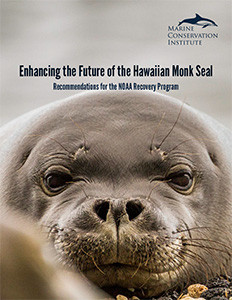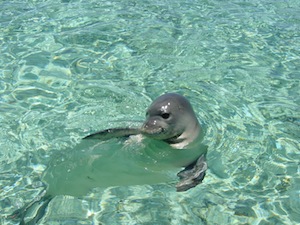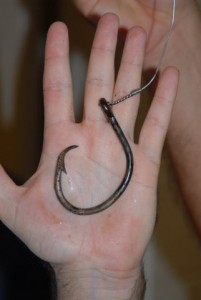COMMENT
 “Mediterranean monk seal biologists and managers are jetting across oceans to Hawaii to attend the International Collaboration for the Conservation of Monk Seals. The HMSRP and our international colleagues will be spending the next two weeks sharing science, outreach and management experiences to help both species of monk seal. We will be sharing news, updates and interesting facts over the next 2 weeks.” — NOAA Hawaiian Monk Seal Research Program
“Mediterranean monk seal biologists and managers are jetting across oceans to Hawaii to attend the International Collaboration for the Conservation of Monk Seals. The HMSRP and our international colleagues will be spending the next two weeks sharing science, outreach and management experiences to help both species of monk seal. We will be sharing news, updates and interesting facts over the next 2 weeks.” — NOAA Hawaiian Monk Seal Research Program
Some — including The Monachus Guardian — have questioned the wisdom of convening a “closed door” workshop of this type at a time of severe funding shortages, urgent conservation challenges at the grassroots level, and lack of stakeholder participation in both Hawaii and the Mediterranean. [See comments on the Hawaiian Monk Seal Research Program Facebook page for a brief overview of the debate — or rather, the debate that should be.] Continue reading “The conservation workshop that wasn’t”

 Marine Conservation Institute undertook this report on the Hawaiian Monk Seal Recovery Program for the purpose of enhancing the conservation prospects of one of the world’s most endangered pinnipeds. The Hawaiian monk seal (Neomonachus schauinslandi), whose estimated population now hovers between 900 and 1,100 animals, has suffered a 60-year decline despite the efforts of National Oceanic and Atmospheric Administration’s (NOAA) National Marine Fisheries Service (NMFS) and others to reverse it. Although some may view the seal’s fate as hopeless, it is not. Despite difficult circumstances, NMFS and its partners have made progress on several fronts to slow the seal’s decline. Encouragingly, NMFS estimates that up to 32 per cent of all seals living in 2012 were alive because of hundreds of interventions taken by the agency over many years to enhance the survival of individual seals at risk.
Marine Conservation Institute undertook this report on the Hawaiian Monk Seal Recovery Program for the purpose of enhancing the conservation prospects of one of the world’s most endangered pinnipeds. The Hawaiian monk seal (Neomonachus schauinslandi), whose estimated population now hovers between 900 and 1,100 animals, has suffered a 60-year decline despite the efforts of National Oceanic and Atmospheric Administration’s (NOAA) National Marine Fisheries Service (NMFS) and others to reverse it. Although some may view the seal’s fate as hopeless, it is not. Despite difficult circumstances, NMFS and its partners have made progress on several fronts to slow the seal’s decline. Encouragingly, NMFS estimates that up to 32 per cent of all seals living in 2012 were alive because of hundreds of interventions taken by the agency over many years to enhance the survival of individual seals at risk.  The Final PEIS for Hawaiian Monk Seal Recovery Actions was made available for public review from April 11 to May 12, 2014. The Preferred Alternative identified in the Final PEIS is Alternative 3, Limited Translocation. The Preferred Alternative does not include any translocation option that involves moving seals born in the Northwestern Hawaiian Islands and releasing them in the main Hawaiian Islands. The Final PEIS is available at:
The Final PEIS for Hawaiian Monk Seal Recovery Actions was made available for public review from April 11 to May 12, 2014. The Preferred Alternative identified in the Final PEIS is Alternative 3, Limited Translocation. The Preferred Alternative does not include any translocation option that involves moving seals born in the Northwestern Hawaiian Islands and releasing them in the main Hawaiian Islands. The Final PEIS is available at:
